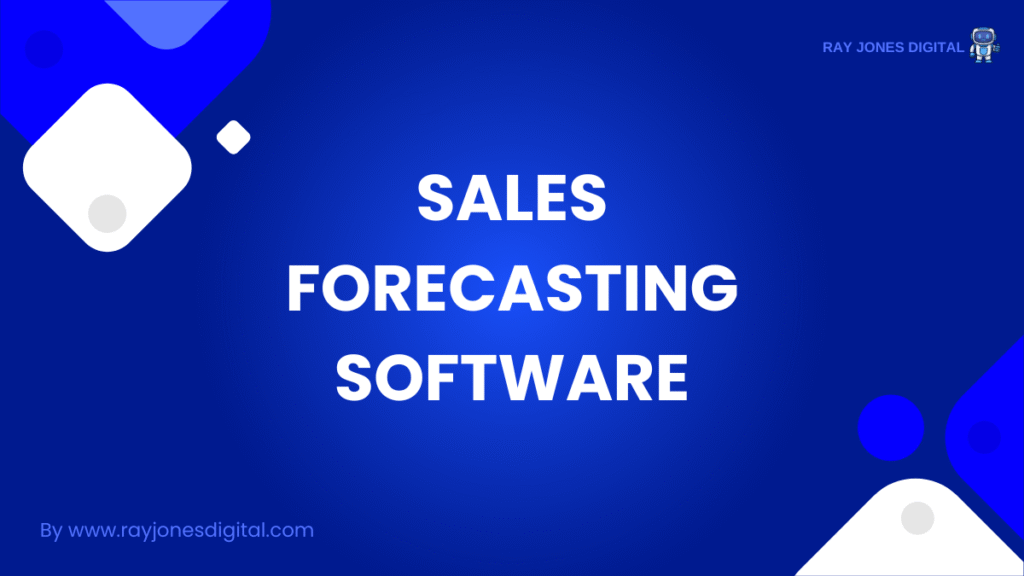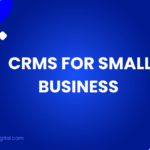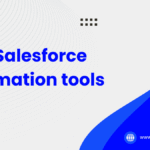
Sales forecasting has evolved dramatically over the past few years. What once required endless spreadsheets and educated guesswork now relies on sophisticated algorithms and real-time data analysis. With businesses facing unprecedented market volatility, having the right sales forecasting software isn’t just helpful—it’s essential for survival.
The right forecasting tool can mean the difference between missing revenue targets and exceeding them. It can help you allocate resources more effectively, identify market trends before competitors, and make data-driven decisions that drive growth. But with dozens of options available, choosing the best sales forecasting software for your business can feel overwhelming.
This comprehensive guide examines the top 10 sales forecasting software solutions in 2026, based on expert evaluations, user reviews, and performance metrics. We’ll explore what makes each platform unique, their key features, pricing structures, and which types of businesses they serve best.
What Makes Great Sales Forecasting Software?
Before diving into our top picks, it’s worth understanding what separates good forecasting tools from great ones. The best sales forecasting software combines several essential elements.
First, accuracy matters most. The software should use advanced algorithms and machine learning to analyse historical data, market trends, and sales patterns. It should also integrate seamlessly with your existing CRM and sales tools to provide real-time insights.
User experience plays a crucial role too. Even the most powerful forecasting engine becomes useless if your team struggles to navigate the interface or interpret the results. The best tools balance sophistication with simplicity.
Customisation capabilities are equally important. Different industries, business models, and sales cycles require different approaches to forecasting. Top-tier software adapts to your specific needs rather than forcing you to adapt to its limitations.
Top 10 Sales Forecasting Software Solutions
1. Salesforce Einstein Analytics
Salesforce Einstein Analytics continues to dominate the sales forecasting landscape. Built on the world’s most popular CRM platform, it leverages artificial intelligence to provide highly accurate predictions.
The platform excels at identifying patterns in large datasets and can forecast revenue, deal closure rates, and sales team performance. Its integration with Salesforce CRM means data flows seamlessly between systems, eliminating manual data entry and reducing errors.
Einstein Analytics offers multiple forecasting models, from simple trend analysis to complex machine learning algorithms. Users can create custom forecasting scenarios and compare different outcomes side by side.
Best for: Large enterprises already using Salesforce CRM
Pricing: Custom pricing based on usage and features
2. HubSpot Sales Analytics
HubSpot’s forecasting tools have matured significantly, offering robust prediction capabilities within their comprehensive sales and marketing platform. The software combines historical sales data with lead scoring and pipeline analysis to generate accurate forecasts.
What sets HubSpot apart is its user-friendly interface and comprehensive reporting features. Sales managers can easily track forecast accuracy over time and identify which factors most influence revenue predictions.
The platform also offers excellent collaboration features, allowing teams to share forecasts, add notes, and adjust predictions based on market intelligence.
Best for: Small to medium-sized businesses seeking an all-in-one solution
Pricing: Starts at £90 per month for the Professional plan
3. Pipedrive Insights
Pipedrive has built a reputation for simplicity and effectiveness, and their forecasting tools reflect these strengths. The platform uses visual pipeline management combined with predictive analytics to help sales teams understand future revenue potential.
The software automatically tracks deal progression and identifies bottlenecks that could impact forecasts. It also provides probability-based forecasting, showing best-case, worst-case, and most likely scenarios.
Pipedrive’s strength lies in its intuitive design and quick setup process. Teams can start generating meaningful forecasts within days rather than weeks.
Best for: SMBs prioritising ease of use and quick implementation
Pricing: Essential plan starts at £12.50 per user per month
4. Tableau Sales Analytics
Tableau brings powerful data visualisation capabilities to sales forecasting. While not exclusively a sales tool, its forecasting features rival dedicated sales platforms, particularly for businesses with complex data requirements.
The platform excels at combining sales data with external factors like market trends, economic indicators, and seasonal patterns. Users can create highly customised forecasting models and present results through stunning visualisations.
Tableau’s strength lies in its flexibility and analytical depth. However, it requires more technical expertise than other options on this list.
Best for: Data-driven organisations with analytical resources
Pricing: Creator licence starts at £75 per user per month
5. Zoho Analytics
Zoho Analytics offers comprehensive forecasting capabilities at an attractive price point. The platform combines traditional statistical methods with modern machine learning techniques to generate accurate predictions.
The software integrates well with other Zoho products and many third-party applications. It offers automated report generation and can send forecast updates to stakeholders on a scheduled basis.
Zoho’s forecasting tools include trend analysis, seasonal adjustment, and scenario planning. The platform also provides confidence intervals for predictions, helping users understand forecast reliability.
Best for: Cost-conscious businesses seeking powerful analytics
Pricing: Standard plan starts at £18 per month for up to 5 users
6. Microsoft Power BI
Microsoft Power BI has evolved into a formidable forecasting platform, particularly for organisations already invested in the Microsoft ecosystem. The platform offers both built-in forecasting capabilities and the ability to integrate custom machine learning models.
Power BI excels at combining sales data with other business metrics like marketing spend, customer satisfaction scores, and operational data. This holistic approach often leads to more accurate forecasts.
The platform’s integration with Excel makes it familiar to many users, reducing the learning curve. However, advanced features require more technical knowledge.
Best for: Microsoft-centric organisations seeking integrated analytics
Pricing: Pro licence costs £8.40 per user per month
7. InsightSquared (now part of Mediafly)
InsightSquared has established itself as a specialist in sales analytics and forecasting. The platform focuses specifically on revenue operations and offers sophisticated forecasting models tailored to different sales methodologies.
The software provides real-time forecast accuracy tracking and can identify which deals are most likely to slip or close early. It also offers territory-based forecasting and quota planning features.
InsightSquared’s strength lies in its sales-specific focus and deep integration with popular CRM systems. The platform offers extensive customisation options for different industries and business models.
Best for: Revenue operations teams seeking specialised forecasting tools
Pricing: Custom pricing based on requirements
8. Anaplan
Anaplan takes a different approach to sales forecasting by combining it with broader business planning capabilities. The platform allows organisations to create connected forecasting models that link sales predictions to financial planning, resource allocation, and operational decisions.
The software excels at scenario planning and what-if analysis. Users can model different market conditions and see how changes in one area impact overall business performance.
Anaplan’s enterprise-grade platform handles complex organisational structures and multiple business units effectively. However, it requires significant implementation effort and training.
Best for: Large enterprises seeking integrated business planning
Pricing: Custom pricing based on complexity and usage
9. Qlik Sense
Qlik Sense brings associative analytics to sales forecasting, allowing users to explore data relationships that traditional tools might miss. The platform’s unique approach to data analysis can uncover hidden patterns that improve forecast accuracy.
The software offers both guided and self-service analytics, making it accessible to users with varying technical skills. Its visualisation capabilities help teams understand complex forecasting scenarios.
Qlik Sense integrates well with various data sources and can incorporate external data like market research and economic indicators into forecasting models.
Best for: Organisations prioritising data exploration and discovery
Pricing: Analyser licence starts at £24 per user per month
10. Workday Adaptive Planning
Workday Adaptive Planning (formerly Adaptive Insights) specialises in financial planning and forecasting, including sales forecasting. The platform connects sales predictions with financial planning processes, ensuring alignment between sales and finance teams.
The software offers driver-based forecasting, allowing users to model how changes in key business drivers impact sales performance. It also provides version control and approval workflows for forecast management.
Workday’s strength lies in its financial planning integration and enterprise-grade security features. The platform works particularly well for subscription-based and recurring revenue businesses.
Best for: Finance-led organisations seeking integrated planning solutions
Pricing: Custom pricing based on company size and requirements
How to Choose the Right Sales Forecasting Software
Selecting the best sales forecasting software for your business depends on several factors. Start by assessing your current technology stack and integration requirements. If you’re already using a CRM system, look for forecasting tools that integrate seamlessly with your existing setup.
Consider your team’s technical capabilities and available resources. Some platforms require significant technical expertise, while others prioritise ease of use. Choose a solution that matches your team’s skills and available support resources.
Evaluate your specific forecasting needs. Do you need basic trend analysis or complex scenario modelling? Are you forecasting for a single product line or multiple business units? Different tools excel at different types of forecasting.
Budget considerations matter too. While enterprise-grade solutions offer advanced features, they may not be necessary for smaller businesses. Consider both upfront costs and ongoing expenses, including training and support.
Finally, think about scalability. Choose a platform that can grow with your business rather than one you’ll quickly outgrow.
Key Features to Look For
When evaluating sales forecasting software, certain features indicate a mature, capable platform. Look for tools that offer multiple forecasting methods, from simple trend analysis to sophisticated machine learning models.
Integration capabilities are crucial. The best platforms connect with your CRM, ERP, and other business systems to provide comprehensive insights. Real-time data synchronisation ensures forecasts stay current as conditions change.
Collaboration features help teams work together more effectively. Look for tools that allow multiple users to contribute to forecasts, add comments, and track changes over time.
Accuracy tracking and reporting features help you understand how well your forecasts perform over time. The best tools provide detailed analytics about forecast accuracy and identify areas for improvement.
Mobile accessibility ensures your team can access forecasts and update predictions while on the go. This becomes particularly important for field sales teams and remote workers.
Making the Most of Your Investment
Implementing sales forecasting software successfully requires more than just choosing the right tool. Start with clean, accurate data. Even the most sophisticated software produces poor results when working with incomplete or inaccurate information.
Invest in proper training for your team. Users who understand the software’s capabilities and limitations will generate more accurate forecasts and make better decisions.

I am Ray Jones Digital
My current occupations: a Digital Marketer, Local SEO expert, Link Builder, and WordPress SEO specialist. Shopify SEO, Ecommerce Store Management, and HTML & WordPress Developer I have been practicing the above mentioned services for more than 10 years now As an SEO expert working with your ongoing projects.



